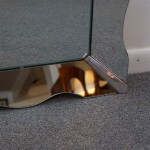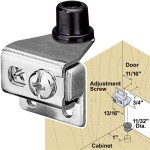How to Paint a Mirror Frame Shabby Chic
The shabby chic aesthetic, characterized by its distressed, vintage-inspired appearance, offers a charming and personalized touch to home decor. Painting a mirror frame in this style is a relatively simple and cost-effective way to transform an ordinary mirror into a statement piece. This article provides a comprehensive guide on how to achieve a shabby chic finish on a mirror frame, covering preparation, painting techniques, and distressing methods.
Key Point 1: Preparation is Paramount
Proper preparation ensures a successful and long-lasting shabby chic finish. Neglecting this step can result in uneven paint application, poor adhesion, and ultimately, a less desirable final product.
The initial step involves cleaning the mirror frame thoroughly. Regardless of the material of the frame – wood, metal, or plastic – accumulated dust, grease, and grime must be removed. Use a mild detergent diluted in warm water and a soft cloth to wipe down the entire frame. For stubborn stains or grease, a degreasing cleaner may be necessary. Ensure the cleaner is compatible with the frame's material to avoid damage.
After cleaning, allow the frame to dry completely. Moisture can interfere with paint adhesion, leading to bubbling or peeling. Once dry, inspect the frame for any existing damage, such as cracks, chips, or peeling paint. Address these issues before proceeding.
For wooden frames, fill any cracks or chips with wood filler. Apply the filler according to the manufacturer's instructions, allowing it to dry completely. Once dry, sand the filled areas smooth using fine-grit sandpaper (around 220 grit). The goal is to create a seamless surface for painting.
Metal frames often require rust removal. Use a wire brush or sandpaper to remove any rust spots. After removing the rust, apply a rust-inhibiting primer to prevent further corrosion. Follow the primer manufacturer's instructions for application and drying time.
Plastic frames may have a glossy surface that hinders paint adhesion. Lightly sand the surface with fine-grit sandpaper to create a slightly roughened texture. This will improve the paint's ability to grip the plastic. Avoid excessive sanding, as it can damage the plastic.
Protect the mirror surface with painter's tape. Carefully apply the tape along the edge where the frame meets the mirror, ensuring a clean and straight line. Overlap the tape slightly onto the frame to prevent paint from seeping onto the mirror. For added protection, consider covering the entire mirror surface with a sheet of paper or plastic secured with tape.
Priming the frame is crucial for achieving a durable and even finish. Primer creates a consistent surface for the paint to adhere to, especially on previously painted or glossy surfaces. Choose a primer that is compatible with the frame's material and the type of paint to be used. Apply the primer in thin, even coats, allowing each coat to dry completely before applying the next. Two coats of primer may be necessary for optimal coverage. Allow the primer to cure completely according to the manufacturer's instructions before proceeding to the painting stage.
Key Point 2: Painting Techniques for a Shabby Chic Look
The painting process is where the shabby chic aesthetic begins to take shape. The choice of paint and the application techniques employed contribute significantly to the final look.
Selecting the right paint is essential. Chalk paint is a popular choice for shabby chic projects due to its matte finish, ease of distressing, and excellent adhesion. Acrylic paint is another viable option, offering good durability and a wide range of colors. Latex paint can also be used, but it may require more sanding for distressing. Choose a paint that is compatible with the primer used and the frame's material.
Apply the base coat of paint in thin, even layers. Avoid applying thick coats, as they can lead to drips and uneven drying. Use a brush, roller, or spray paint, depending on the size and complexity of the frame. For intricate designs, a brush may be the most effective option. For larger, flatter surfaces, a roller or spray paint can provide a smoother finish. Allow each coat to dry completely before applying the next. Two coats of paint are typically sufficient for achieving full coverage.
Once the base coat is dry, consider adding a second color for highlighting. This technique involves applying a different color paint to certain areas of the frame, allowing the base color to peek through after distressing. Choose a contrasting color that complements the base color. Apply the second color sparingly, focusing on areas that would naturally experience wear and tear, such as edges, corners, and raised details. Use a dry brush technique, applying the paint lightly and randomly to create a textured effect.
Another technique for adding depth and dimension is dry brushing. This involves dipping the tip of a brush into a small amount of paint, then wiping off most of the paint onto a paper towel. The remaining paint is then lightly brushed onto the frame, creating a subtle, textured effect. Dry brushing can be used with a variety of colors to add highlights and shadows.
Experiment with different painting techniques to create a unique and personalized shabby chic finish. There are no strict rules, so feel free to explore different color combinations, application methods, and distressing techniques. The key is to create a look that is both visually appealing and authentically aged.
Key Point 3: Distressing for an Authentic Aged Appearance
Distressing is the hallmark of the shabby chic aesthetic, creating the illusion of age and wear. This process involves intentionally removing paint from certain areas of the frame to reveal the underlying layers or the original surface.
Several methods can be used for distressing, each producing a slightly different effect. Sanding is the most common and versatile method. Use sandpaper of varying grits (from coarse to fine) to remove paint from specific areas. Focus on edges, corners, raised details, and areas that would naturally experience wear and tear. Apply pressure gradually, checking the progress frequently to avoid removing too much paint. Begin with coarser grit sandpaper for more aggressive distressing and switch to finer grit sandpaper for more subtle effects.
Another popular distressing method is wet distressing. This involves wiping away the paint with a damp cloth shortly after it has been applied. This technique is particularly effective for creating a subtle, weathered look. Apply the paint to the desired areas, then immediately wipe it away with a damp cloth, leaving a thin layer of paint in the textured areas.
A putty knife or scraper can also be used for distressing. This technique involves using the edge of the putty knife to scrape away paint from specific areas. This method is particularly effective for creating a more aggressive, chipped paint effect. Angle the putty knife slightly and apply pressure to scrape away the paint, revealing the underlying layers. Experiment with different angles and pressure levels to achieve varying degrees of distressing.
After distressing, consider applying a glaze or antiquing wax to enhance the aged appearance. Glaze is a translucent liquid that is applied to the surface and then wiped away, leaving a subtle tint in the recessed areas. Antiquing wax is a similar product that is applied with a brush or cloth and then buffed to a soft sheen. Both glaze and antiquing wax can add depth and dimension to the finish, accentuating the distressed areas.
Once the distressing is complete and any glazes or waxes have been applied, seal the frame with a clear coat of sealant. This will protect the paint from chipping and scratching, ensuring a long-lasting finish. Choose a sealant that is compatible with the type of paint used. Apply the sealant in thin, even coats, allowing each coat to dry completely before applying the next. Two coats of sealant are typically sufficient for providing adequate protection. Allow the sealant to cure completely according to the manufacturer's instructions before handling the finished mirror frame.

Easy Chippy Painted Mirror Diy Hallstrom Home

Painting A Mirror Frame Easy Yet Stunning Ideas Girl In The Garage

How To Create Your Own Gorgeous Shabby Chic Finish For A Mirror Or Frame Sulis Mirrors Of Bath

Painting A Mirror Frame Easy Yet Stunning Ideas Frames Inspiration

12 Techniques To Painting Antique Mirrors Hallstrom Home

12 Techniques To Painting Antique Mirrors Shabby Chic Bedrooms Home Decor Mirror

Painting A Mirror Frame Easy Yet Stunning Ideas Girl In The Garage

12 Techniques To Painting Antique Mirrors Hallstrom Home

Shabby Chic Mirror Makeover Confessions Of A Serial Do It Yourselfer

Chalk Painting And Antiquing A Frame Antique Mirror Diy Frames








